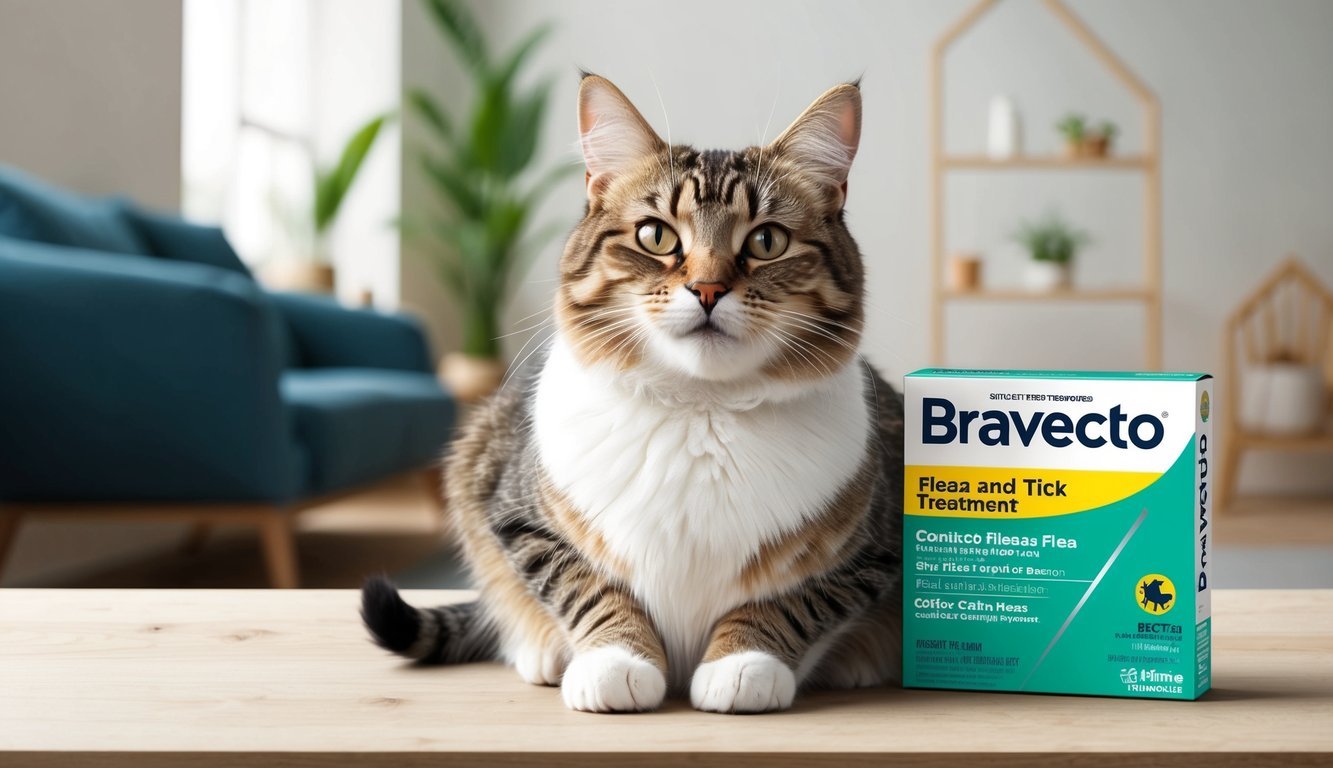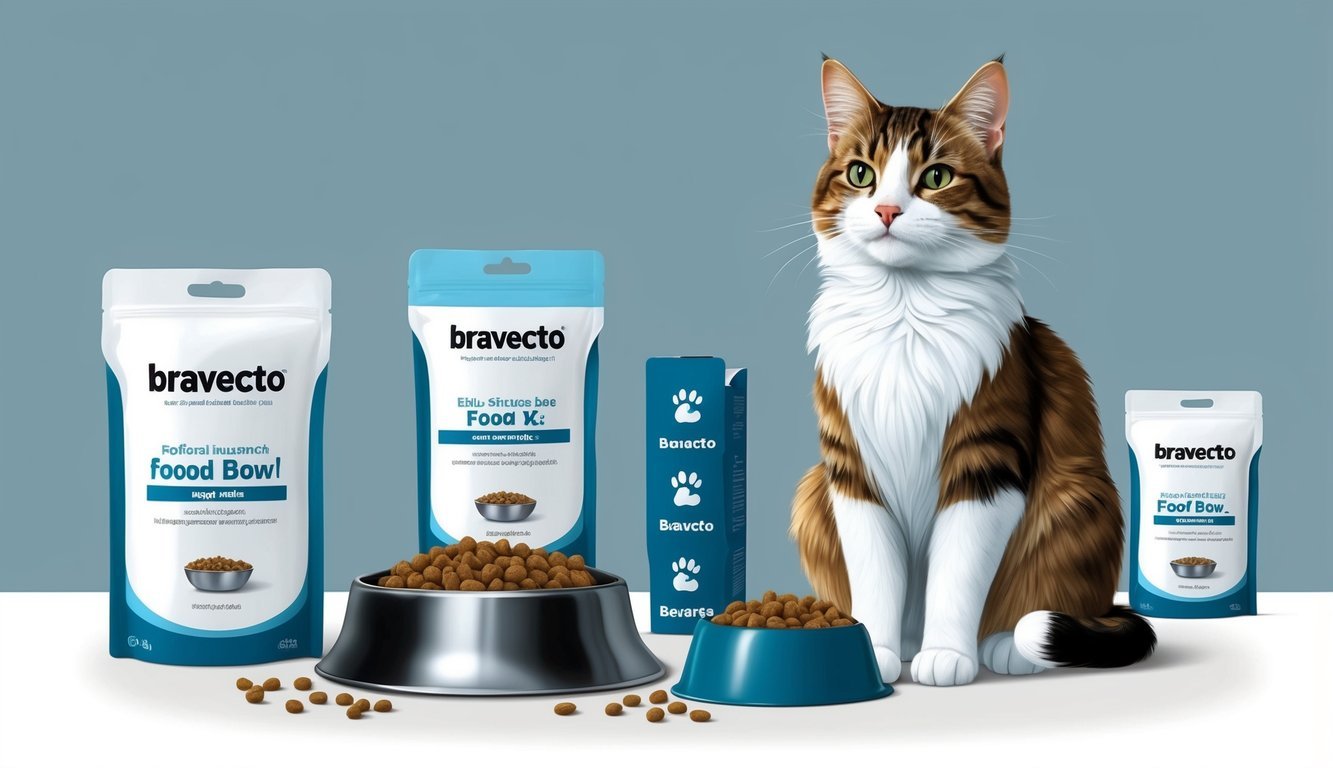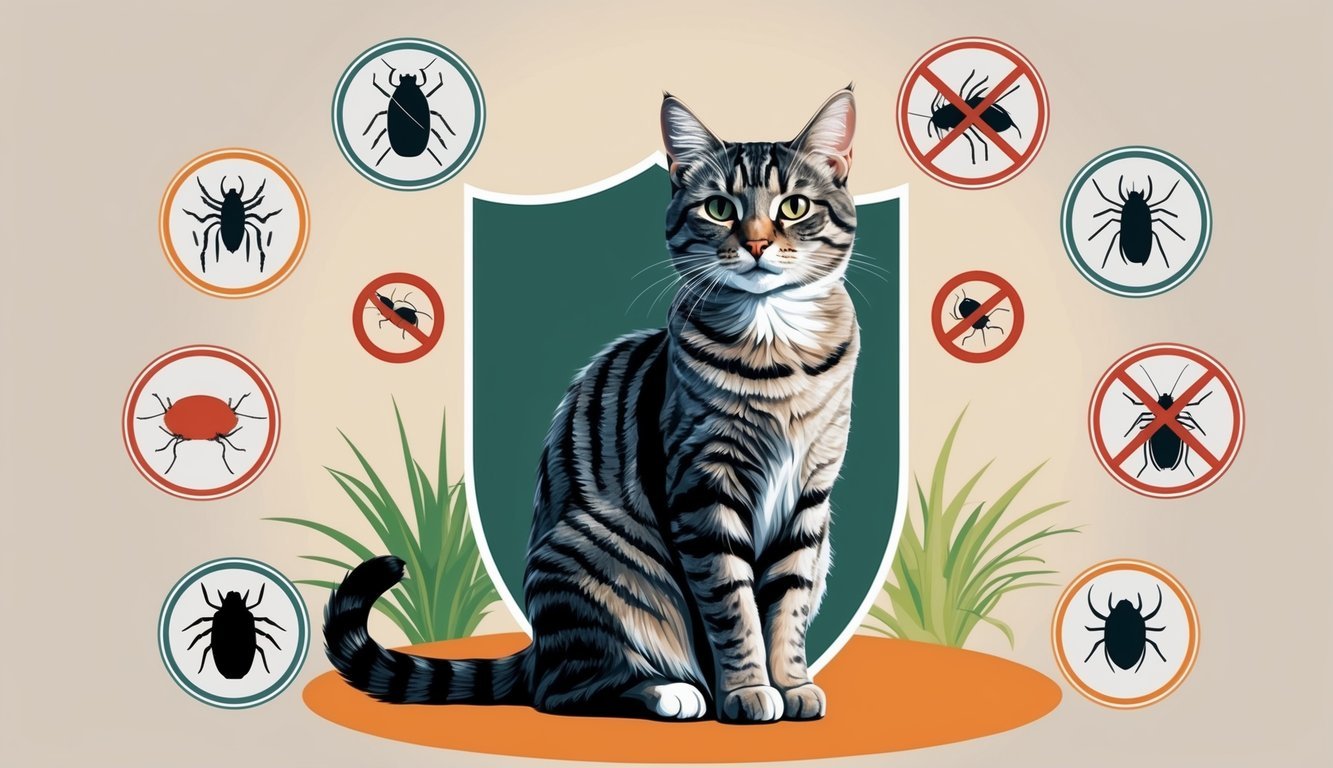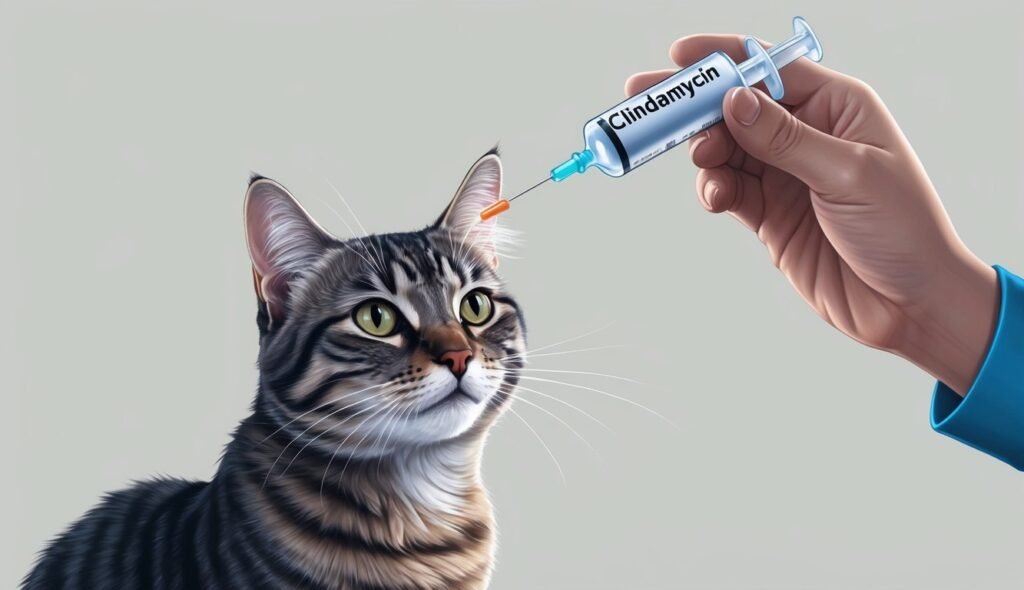When it comes to keeping your cat safe from fleas and ticks, choosing the right medication is essential. Bravecto is generally considered safe for cats, but it’s important to be aware of potential side effects and how it compares to other options on the market.
This blog post will help you navigate the specifics of Bravecto, offering insight into its efficacy and safety profile.
Many pet owners have questions about the side effects associated with Bravecto, especially since some cats might experience adverse reactions.
Understanding these aspects can make a significant difference in your decision-making process about flea and tick prevention for your feline friend.
As you read on, you’ll discover the key details that can aid you in determining if Bravecto is the right choice for your cat.
The choice between various flea and tick medications can be daunting.
By the end of this article, you’ll gain useful information to help you weigh the pros and cons of Bravecto, ensuring your cat is both safe and protected from pesky parasites.
Key Takeaways
- Bravecto is effective but may cause side effects in some cats.
- Understanding dosage and application is crucial for safety.
- Comparing options can help you make an informed decision.
Understanding Bravecto for Cats
Bravecto is a topical solution developed by Merck Animal Health.
It contains fluralaner, which belongs to the isoxazoline class of compounds.
This medication is designed to protect your cat from fleas and ticks, providing treatment that lasts up to 12 weeks.
When you apply Bravecto, it’s easy to do.
Simply part the fur at the base of your cat’s neck, place the applicator tip against the skin, and squeeze to release the contents.
Bravecto Plus offers additional protection against intestinal parasites and heartworm.
This combination can be a great choice if you’re looking for comprehensive parasite control.
Common Side Effects:
- Vomiting
- Diarrhea
- Itching
- Redness at the application site
While side effects are typically mild and temporary, it’s important to monitor your cat after application.
In rare cases, more serious reactions can occur, so consult your veterinarian if you notice any concerning symptoms.
Bravecto is generally considered safe for most cats, but always check with your vet to ensure it’s the right option for your pet’s health.
Safety Profile of Bravecto

When considering Bravecto for your cat, understanding its safety profile is essential.
This section covers potential side effects and important risks or warnings associated with the medication.
Potential Side Effects
Bravecto is generally well-tolerated in cats, but it can cause certain side effects.
Common reports include:
- Vomiting
- Diarrhea
- Lethargy
- Itching or skin irritation
- Decreased appetite
In clinical studies, about 8% of cats experienced vomiting, and roughly 5% had diarrhea or itching.
Other effects may include hair loss, hypersalivation, and more serious issues like ataxia or muscle tremors in rare cases.
If you notice any unusual behavior after administering Bravecto, it’s advisable to consult your veterinarian promptly.
Risks and Warnings
The FDA has approved Bravecto as safe for use in cats weighing over 2.6 pounds and older than six months.
However, caution is advised for cats with a history of neurologic adverse reactions or those showing signs of neurologic disease.
Serious adverse reactions, including seizures, are rare but have been reported.
Always monitor your cat for potential toxicity or unusual symptoms after treatment.
Your veterinarian can provide additional guidance if your cat falls into a higher-risk category.
Efficacy of Bravecto Against Parasites

Bravecto is designed to be effective against common parasites like fleas and ticks.
It provides long-lasting protection for your cat, typically up to 12 weeks, making it convenient for pet owners.
Flea Control
Bravecto kills fleas quickly and helps prevent new infestations.
This rapid action is vital for controlling flea populations in your home.
Tick Prevention
It’s also effective against ticks, including the black-legged tick (Ixodes scapularis) and the American dog tick (Dermacentor variabilis).
- Effectiveness: Bravecto significantly reduces tick infestations.
- Duration: You only need to treat your cat every three months, which can simplify your routine.
Research indicates that Bravecto effectively reduces the number of ticks that can attach to cats.
This feature is especially important if your cat spends time outdoors, where exposure to ticks is higher.
Security
Pet owners can feel secure knowing that Bravecto addresses common parasites.
This product not only kills existing fleas and ticks but also works to prevent future infestations.
Application and Dosing Information
When using Bravecto for your cat, it’s essential to follow the dosing instructions carefully.
Bravecto comes in a topical solution that is easy to administer.
Simply apply it to your cat’s skin, typically on the back of the neck.
Dosage Recommendations:
- Cats 2.6 to 6.2 lbs: Use 112.5 mg
- Cats 6.3 to 13.2 lbs: Use 250 mg
- Cats 13.3 to 22 lbs: Use 500 mg
It’s important to choose the correct dosage based on your cat’s weight.
Always weigh your cat if you’re unsure, as using the wrong dose may lead to ineffective treatment or increase the risk of side effects.
Make sure to apply Bravecto to dry skin.
Avoid bathing your cat for at least 3 days before and after application to ensure proper absorption.
Check the expiration date on the package before use.
Expired products may not perform as expected.
After application, monitor your cat for any signs of adverse reactions, such as vomiting or itching.
These side effects are uncommon but can occur.
If you notice any concerning symptoms, consult your veterinarian.
Bravecto Plus for Broader Protection

Bravecto Plus for Cats offers enhanced protection against a variety of parasites, including heartworms and intestinal parasites.
This extended coverage makes it a valuable option for pet owners looking to safeguard their cats from multiple threats.
Heartworm and Intestinal Parasites
Bravecto Plus includes moxidectin, which plays a crucial role in heartworm prevention.
It protects against Dirofilaria immitis, the parasite responsible for heartworm disease, transmitted by mosquitoes.
Keeping your cat safe from heartworms can prevent severe damage to their heart and lungs.
In addition to heartworm protection, Bravecto Plus tackles intestinal parasites such as roundworms and hookworms.
It helps manage infections caused by Toxocara cati (roundworm) and Ancylostoma tubaeforme (hookworm).
These intestinal parasites can lead to various health issues, including malnutrition and anemia, particularly in kittens.
Additional Parasite Coverage
Beyond heartworms and intestinal parasites, Bravecto Plus offers protection against a wider range of ectoparasites.
While not exhaustive, this includes coverage for fleas, ticks, and some mites.
Let’s break it down:
- Ticks: Effective against various tick species, including the Australian paralysis tick and Asian longhorned tick.
- Mites: Addresses ear mites and skin mites, as well as the Caribbean fur mite.
The inclusion of moxidectin enhances this product’s efficacy, making it suitable for comprehensive parasite management.
Regular use every two months can simplify your cat’s health regimen while providing peace of mind against multiple threats.
Pet Owner Considerations
When considering Bravecto for your cat, it’s essential to consult with your veterinarian.
They’ll help determine if it’s the right choice based on your pet’s health and needs.
Prescription Requirement:
Bravecto is available by prescription only.
Make sure to obtain it from a licensed veterinarian.
Dosage Compliance:
Follow your vet’s instructions for dosage and application.
Consistent use is critical for effectively managing fleas and ticks, like Ctenocephalides felis.
Side Effects Monitoring:
While most cats tolerate Bravecto well, keep an eye on your pet for any signs of adverse reactions.
Common side effects include vomiting, diarrhea, and itching.
Report any concerns to your veterinarian promptly.
Handling Precautions:
After applying Bravecto, allow the medication to dry.
To avoid transfer to your skin or clothes, don’t pet your cat until it’s fully absorbed.
Safety for Specific Cats:
Bravecto can be used in cats over 2.6 pounds and older than six months.
It’s deemed safe for breeding, pregnant, and lactating cats, but always confirm with your vet.
Comparative Analysis With Other Products
When evaluating Bravecto for your cat, consider how it stacks up against other flea and tick products like NexGard and Revolution Plus.
Bravecto
- Offers a 12-week protection period.
- Less frequent administration can be convenient.
- Generally well-tolerated, with high satisfaction reported by pet owners.
NexGard
- Available as a monthly chew.
- Effective at fast flea control.
- Good for cats that prefer a chewable form, but requires more frequent dosing.
Revolution Plus
- Provides comprehensive parasite protection.
- Covers fleas, ticks, and other common parasites.
- Requires monthly application, which can be a consideration for busy pet owners.
Veterinary professionals often recommend considering your cat’s specific needs.
If your cat struggles with medication, Bravecto might be a better fit due to its longer duration between doses.
When making your choice, think about lifestyle, your cat’s health, and how often you’re willing to administer treatment.
Each product has its strengths, so finding the right one is about what works for you and your furry friend.
Frequently Asked Questions
When considering Bravecto for your cat, it’s important to address common queries regarding its safety, potential side effects, and necessary precautions.
Here’s a closer look at some of the most frequently asked questions.
Can cats experience side effects from Bravecto?
Yes, cats can experience side effects from Bravecto.
Common reactions include mild issues like itching, vomiting, and diarrhea.
Meanwhile, serious side effects, though rare, may include lethargy, hair loss, or decreased appetite.
How long do potential adverse reactions to Bravecto last in cats?
Most mild side effects tend to resolve within a few hours or days.
More significant reactions could last longer but generally improve with time.
If your cat shows persistent symptoms, it’s best to consult your veterinarian.
What precautions should cat owners take when using Bravecto?
Cat owners should ensure their pets are at least six months old before administering Bravecto.
It’s also crucial to follow the dosage guidelines provided by your veterinarian.
Additionally, monitor your cat for any unusual behavior after application.
Are there any safety concerns for cats licking Bravecto after application?
Yes, it’s advisable to prevent your cat from licking the area where Bravecto was applied.
Licking can lead to ingestion of the product, which may increase the risk of side effects.
To minimize this risk, you can keep your cat occupied until the solution dries.
Have there been any reported cases of cat fatalities linked to Bravecto?
While there have been reports of adverse reactions, fatalities are considered rare.
It’s essential to monitor your cat and discuss any concerns with your veterinarian, especially if you notice severe side effects after administering the treatment.
Is a prescription necessary to purchase Bravecto for cats?
Yes, you need a prescription for Bravecto for cats.
This ensures that a veterinarian evaluates your cat’s health and determines if this product is appropriate for them.
Always consult your vet for the safest options for your pet.



